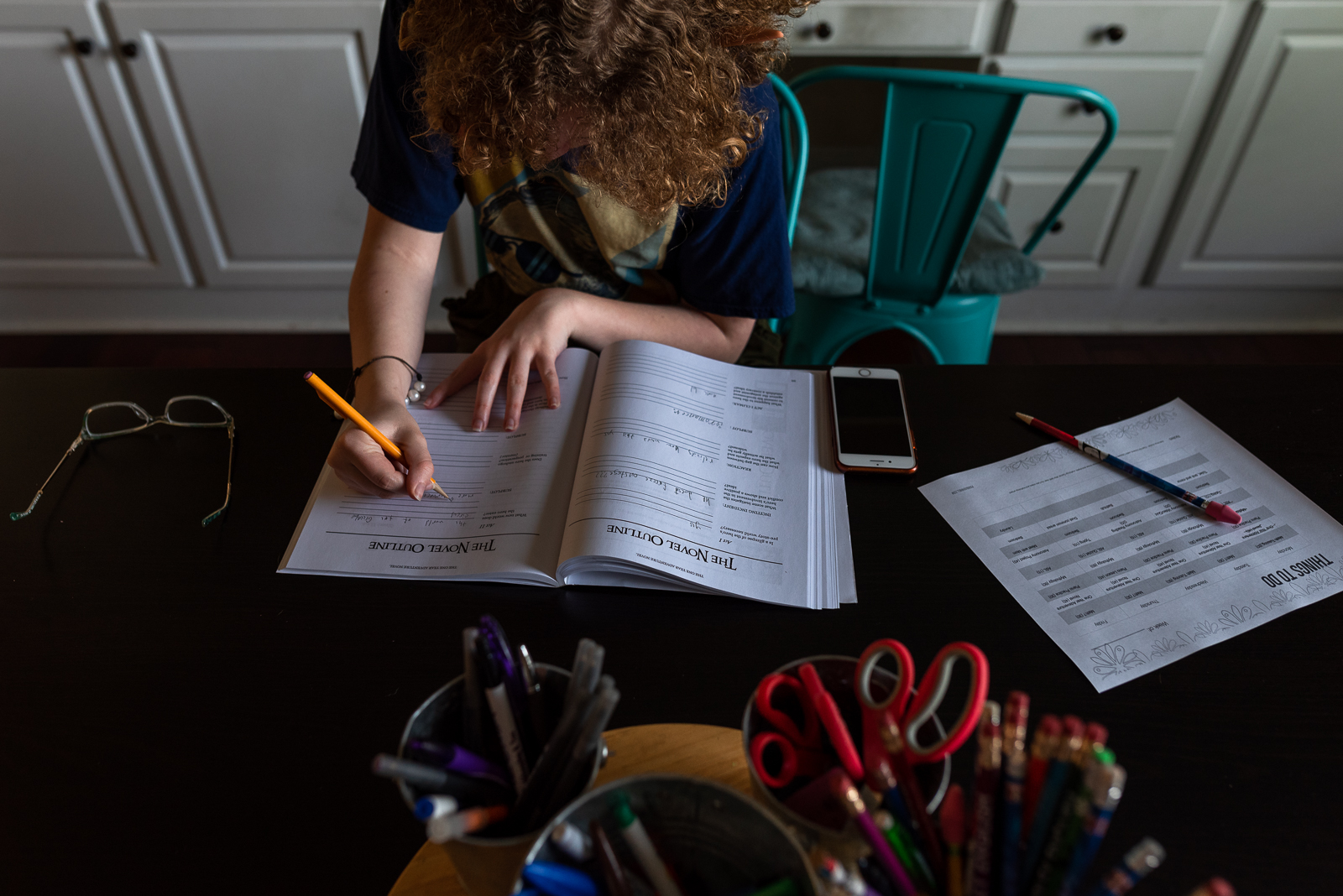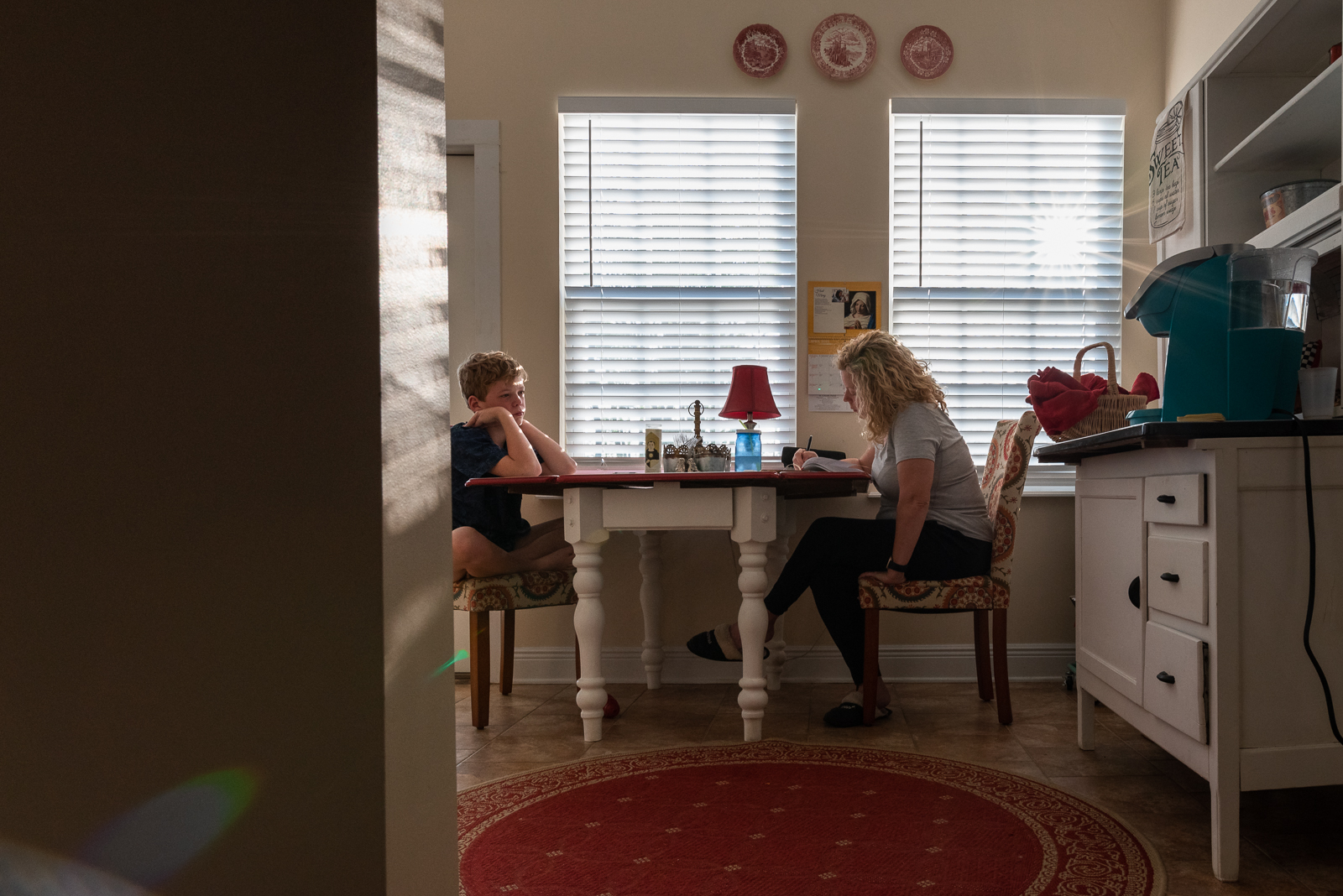
Teaching to your kids’ learning styles is a huge buzzword in homeschool circles, but learning styles may not matter nearly as much as you think. Did you know that learning styles can even be detrimental to your kids’ education?
If you are a fan of learning styles, you’re probably not going to like my take on this. But if you are confused about learning styles and wondering how to fit everything into my child’s preferred learning style when I have three kids and I’m just going to go crazy, you’ll find support and encouragement here!
The Four Different Learning Styles
Let’s begin by defining what they are. There are four different learning styles.
- Visual, which means you learn something better if you see it.
- Auditory, which means you learn best when you hear it.
- Tactile, which means you learn best with any and all of your senses.
- Kinesthetic, which means you learn best through body movement.
Learning styles – it’s a huge buzzword in education today. It’s also a big buzzword and homeschool education, but should it be?
The Popularity Of Learning Styles In Home Education
There are entire curriculums out there that you can purchase with your hard earned money that help you to cater to your child’s learning style.
The idea is that if you teach your child how they best learn, they’re going to learn better.
I’m sorry. It’s just not true. It’s not supported by evidence.
A great book on this topic is Daniel Willingham’s, Why Don’t Students Like School. In it, he breaks down this idea of learning styles and the fact that experts have not been able to prove, despite trying time and time again, that a child learns best by using their preferred learning style.
There are a lot of other things in his book to read, but what it boils down to is basically, when we want to teach our child a specific topic, it’s best learned based on the way the topic is best taught, not the way the child supposedly learns.
Listen to the Podcast:
For example, consider something like learning the countries on a map and your child is an auditory learner. How am I going to help that child learn the shapes of those countries or learn where they are on a map? It doesn’t make sense to verbally tell a child that information. You would obviously visually present that information.
Also, many learning topics can be presented in more than one way. For example, you can present stories orally and you can also present stories visually. I happen to like to read stories better than I like to sit and listen to stories.
The point is, most material is better presented in a specific way.
You’re not going to do auditory equations in algebra for the most part. You’re just going to do it visually. Conversely, some topics are better presented in a more kinesthetic manner. Then, of course, there are a lot of topics that can be presented in multiple ways.
Do Learning Styles Really Matter In Your Homeschool?
I invite you to go dig into Willingham’s research if you are interested in more detail, but here’s what it means for you, as a homeschooling parent.
First, don’t go out and buy a curriculum because you feel like you’re going to be able to reach your child at their learning style better. Also, don’t tie yourself up in knots trying to find activities for your kids to meet a specific learning style.
If you think your child is an auditory learner or a kinesthetic learner, keep in mind that these styles are really preferences. As preferences, we want to do a couple of things.
It’s okay to teach to your child’s preference when it makes sense for the material. If you have a child who loves to listen to stories and seems to remember those stories, because they’ve listened to them, then have them listen. But then if you have children who really don’t like to listen to stories, they’d much rather prefer to sit and read them themselves. That’s okay, too. (Though I will say there are a lot of benefits to hearing somebody else read aloud, even for really good readers. We can get into that another day.)
If you have young children, it’s really great for them to get up and move at all times. Movement is wonderful for young kids.
It’s also OK to try a different style if your kid is getting stuck. If your child is really struggling to learn something, do it a different way. Have them get up and jump up and down on a trampoline while they spell the spelling words out loud. If it helps them, that’s wonderful. The point is not how they learn the spelling words, but that they spell well, or that they memorize the multiplication tables or whatever the learning task requires.
Watch on YouTube:
A Real World Approach To Learning Styles
On the other hand, don’t get so caught up in this idea of learning styles, that you are only catering to one learning style all the time. The reality is when your child leaves your homeschool and goes into the real world to do things like take a class online, go to college, or work at a job, they don’t get asked, “I’m sorry, what’s your preferred learning style? How would you like to learn this?” Instead, the information is just presented to them in the way that it’s presented to them.
What we need to do is strengthen the other modality. If you have a child who is a visual learner or an auditory learner, they prefer that method. It’s okay to strengthen up the other style sometime, especially for things that are easier for them to learn.
In summary, there’s absolutely no scientific proof whatsoever that teaching to a child’s particular learning preference helps them to learn anything better. I know it’s controversial, but it’s true.
Download our free homeschool planning forms.

- How to Keep Homeschool Consistent When Life Isn’t - May 20, 2025
- Six Smart Questions to Ask Before You Buy Curriculum - May 6, 2025
- What Makes a Good Curriculum? - April 22, 2025


